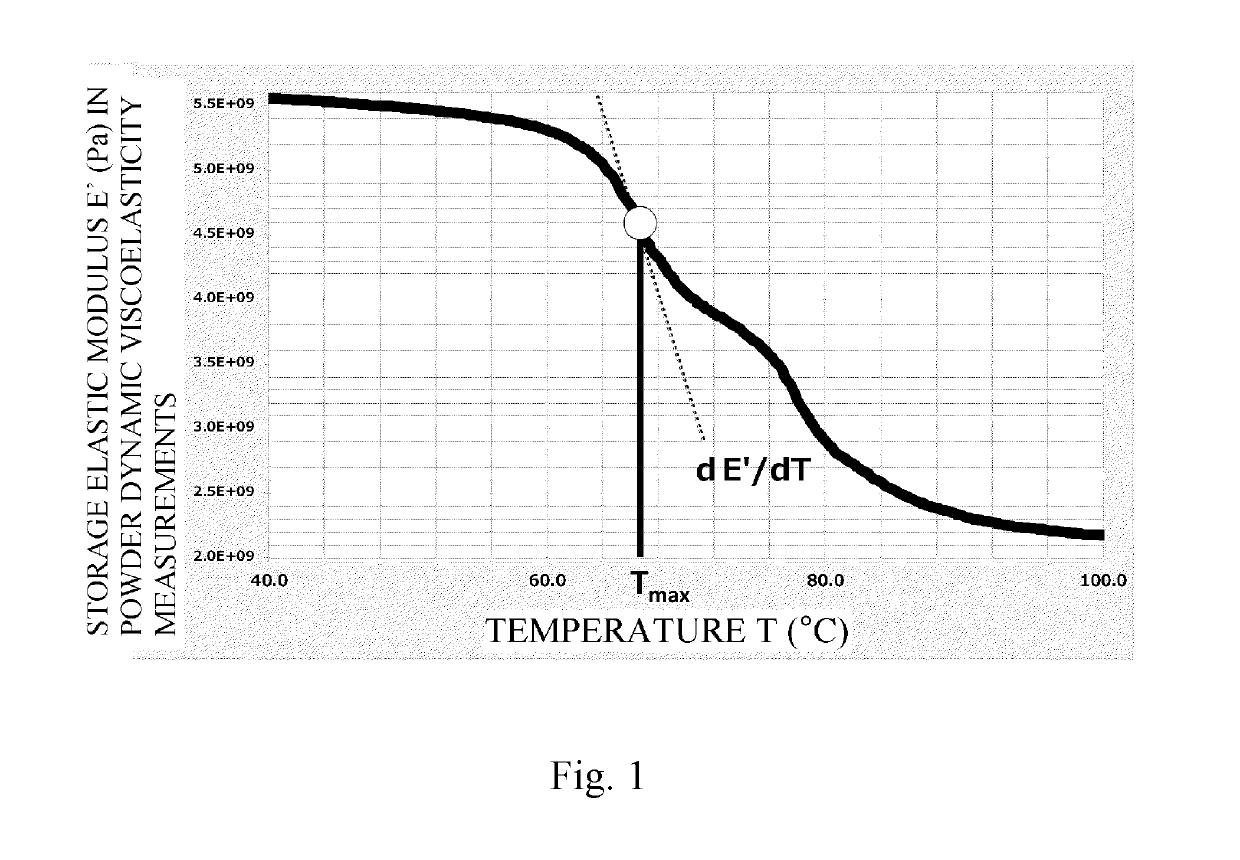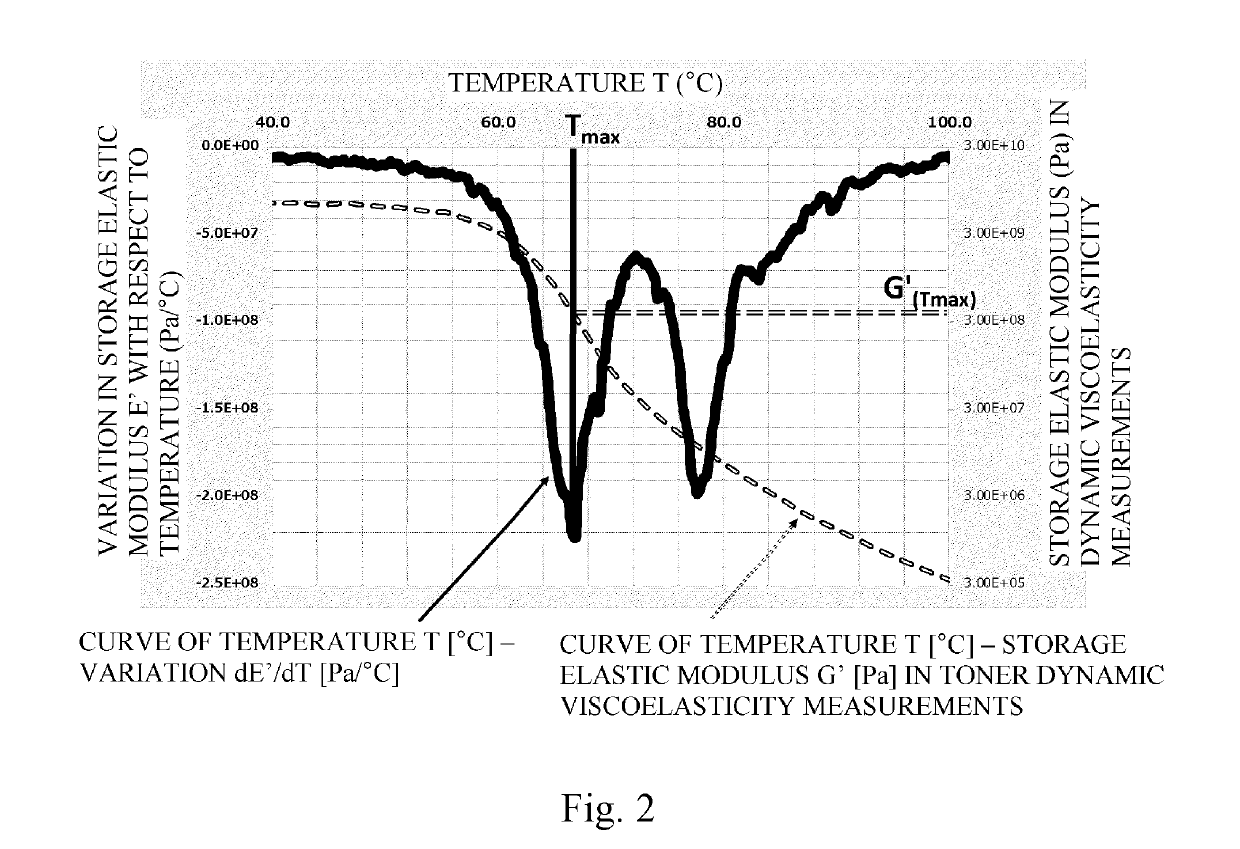Toner, and external additive for toner
a technology of toner and additive, applied in the field of toner and external additive for toner, can solve the problems of inability to fix uniformity at low temperature, easy to occur fixing non-uniformity, and large deformation of toner, so as to reduce the melting of surface layers, improve the melting speed of surface layers, and suppress non-uniformity. the effect of fixing non-uniformity
- Summary
- Abstract
- Description
- Claims
- Application Information
AI Technical Summary
Benefits of technology
Problems solved by technology
Method used
Image
Examples
example 1
[0260]The machine used to evaluate the present working example was a commercially available magnetic single component type printer HP LaserJet Enterprise M606dn (available from Hewlett Packard Enterprise Development LP, processing speed: 350 mm / sec), but modified to a processing speed of 400 mm / sec, and toner 1 was subjected to the evaluations described below using this machine. In addition, the evaluation paper was Vitality (available from Xerox Corporation, basis weight 75 g / cm2, letter size). The evaluation results are shown in Table 6.
examples 2 to 16
[0261]Evaluations were carried out in the same way as in example 1, except that toners 2 to 16 were used. The evaluation results are shown in Table 6.
PUM
| Property | Measurement | Unit |
|---|---|---|
| softening point | aaaaa | aaaaa |
| Tm | aaaaa | aaaaa |
| acid value | aaaaa | aaaaa |
Abstract
Description
Claims
Application Information
 Login to View More
Login to View More - R&D
- Intellectual Property
- Life Sciences
- Materials
- Tech Scout
- Unparalleled Data Quality
- Higher Quality Content
- 60% Fewer Hallucinations
Browse by: Latest US Patents, China's latest patents, Technical Efficacy Thesaurus, Application Domain, Technology Topic, Popular Technical Reports.
© 2025 PatSnap. All rights reserved.Legal|Privacy policy|Modern Slavery Act Transparency Statement|Sitemap|About US| Contact US: help@patsnap.com



